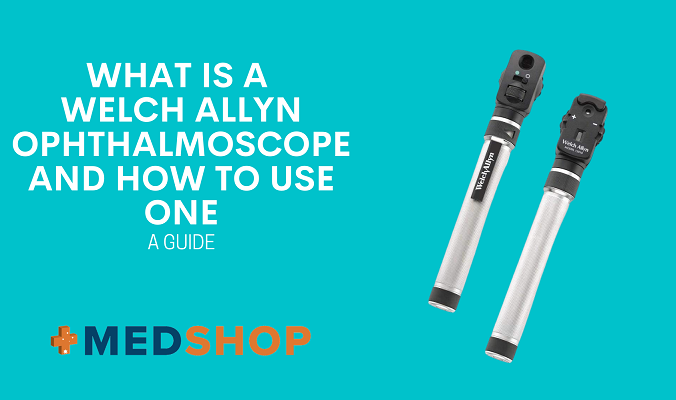
In order to carry out accurate and useful physical examinations, doctors need access to high quality tools and diagnostic equipment. Welch Allyn has been producing precise, reliable medical products for over 100 years.
Founded in 1915, the manufacturer has grown to be one of the most trusted in the industry, and today it supplies its high-quality tools, parts and accessories to healthcare professionals and research centres around the world—covering everything from traditional stethoscopes to iPhone enabled ophthalmoscopes.
Welch Allyn was founded when Dr. Francis Welch and William Noah Allyn developed the world’s first handheld, direct illuminating ophthalmoscope. The tool has been a big part of the company’s identity since the beginning and continues to be one of its most recognisable products. It’s also among its biggest sellers, with hospitals and healthcare facilities around the world placing their trust in the Welch Allyn name.
Here then, to help you choose the correct ophthalmoscope for your needs, we take a closer look at the Welch Allyn ophthalmoscope range, how you use it, and what value it can add to your medical practice.
What is a Welch Allyn Ophthalmoscope?
A Welch Allyn ophthalmoscope is an ophthalmoscope produced by specialist medical manufacturer Welch Allyn. It’s one of the brand’s signature products and is sold in countries around the world—either as a standalone tool or part of a complete diagnostic set that may also include an otoscope and aneroid sphygmomanometer.
An ophthalmoscope is an instrument used to examine the retina. If you’ve ever been for an eye test or visited an ophthalmologist, there’s a good chance they would have taken a look at your retina with an ophthalmoscope. There are two main types of ophthalmoscope: direct and indirect. Direct ophthalmoscopes are used to examine the centre of the retina whereas indirect ophthalmoscopes check the entire retina.
Welch Allyn ophthalmoscopes use either halogen illuminators or SureColor LED technology. This ensures excellent illumination and allows medical professionals to see all elements of the retina.
Welch Allyn ophthalmoscopes come in a range of different sizes and designs. The Welch Allyn pocketscope LED ophthalmoscope is light, compact and easy to transport. The Welch Allyn 3.5 V ophthalmoscope is an advanced instrument with a range of specialist features, while the Welch Allyn Pocket Junior ophthalmoscope is the brand’s most basic model.
Other features include, rechargeable lithium-ion power handles for increased running time when compared to standard devices, a range of diopter configurations, digital connectivity through the Welch Allyn iExaminer platform, and advanced coaxial ophthalmoscopes designed to enable easy entry to the eye for increased field of view, true tissue colour and reduced glare.
How Do Ophthalmoscopes Work?
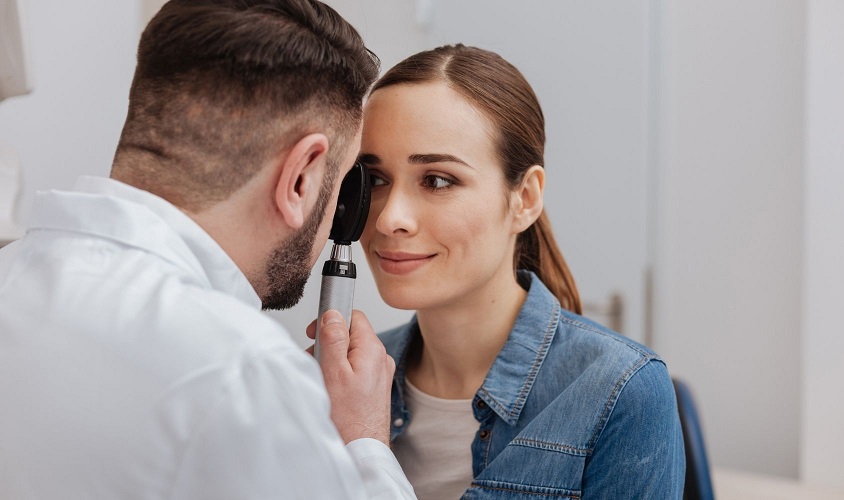
Ophthalmoscopes work by illuminating either a dilated or undilated eye with an LED or halogen light. This allows the medical professional to see the various elements that make up the back of the eye and check for a number of injuries and conditions. The part of the eye that ophthalmoscopes focus on is called the fundus. It’s made up of the retina, the optic disc and a collection of blood vessels.
Ophthalmologists will check the fundus when screening for diseases and conditions that affect the eye. It’s also often included in standard eye examinations. An ophthalmoscope can be used to check for:
- Damage to the optic nerve
- Retinal tear or detachment
- Glaucoma
- Macular degenerations
- Melanoma
- Diabetic retinopathy
- Hypertension
- Infection
More advanced ophthalmoscopes offer doctors the ability to alter the aperture, lens and aperture/filter combinations to gain a larger view of the fundus. This can help specialists to make a more accurate diagnosis.
How to Use a Standard Ophthalmoscope from Welch Allyn
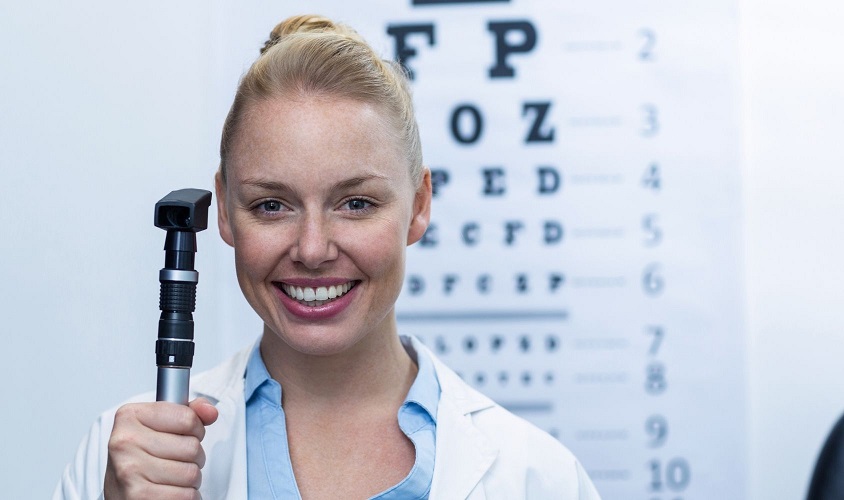
Ophthalmoscopes should always be used by trained professionals. While the instruments are non-invasive, incorrect use can still potentially cause damage to the eye.
When using an ophthalmoscope, it’s essential the patient is seated and still and the correct working distance maintained. Exam lights in the room need to be turned down low, or switched off completely, to optimise the view of the fundus.
Welch Allyn ophthalmoscopes are very intuitive to use. Adjustments can be made to the lens, lighting and filter simply by moving switches and dials on the ophthalmoscope head. Most of these adjustments can be made without removing the ophthalmoscope from the eye, allowing doctors to fine tune their examination quickly and easily.
Filters can be applied to the ophthalmoscope to check different parts of the eye. Red filters are used to look closely at the blood vessels and a red-free filter or cobalt blue filter can be used to check for corneal abrasions or ulcers with fluorescein dye. Slit apertures allow doctors to look at contour abnormalities of the cornea, lens or retina and grids can be used to approximate the relative distance between any retinal lesions found during the examination.
What is the Difference Between Retinoscope and Ophthalmoscope?
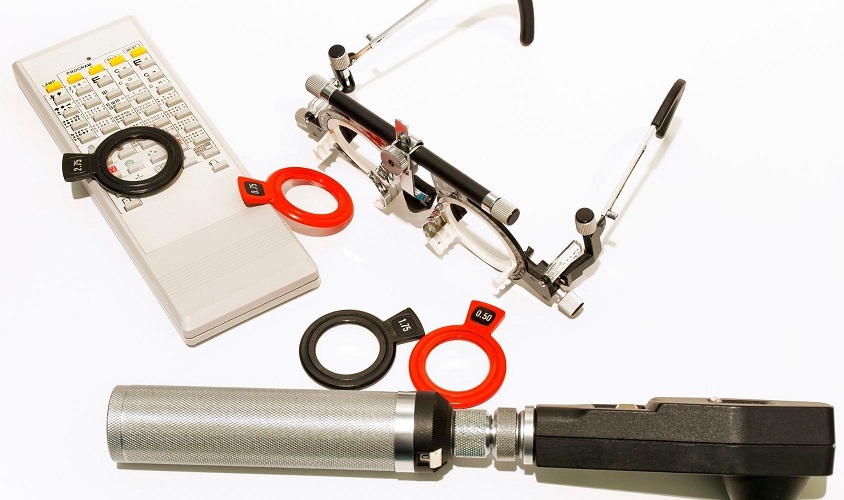
A retinoscope is an instrument used to carry out retinoscopies. A retinoscopy is an exam that’s used to determine the refractive error of the eye. This allows medical professionals to diagnose patients that are farsighted, nearsighted or have astigmatism by examining the field of view.
During the retinoscopy, light needs to be moved quickly from side to side. From the speed and direction that light moves across the eye, opticians and ophthalmologists can estimate the level of refractive error. Ophthalmoscopes are unable to provide this type of fast moving illumination. The existing Welch Allyn catalogue also includes a range of retinoscopes. These are often sold in conjunction with ophthalmoscopes.
How Do You Use Ophthalmoscopes For Red Reflex?

The red reflex refers to the reddish-orange reflection of light from the back of the eye that can be seen during an ophthalmoscopy. Checking the red reflex is important as abnormalities in the reflex can point to a more serious issue.
When using an ophthalmoscope for red reflex, it’s important the lights in the room are turned down low. Doctors should use a direct ophthalmoscope and the lens power should be set at ‘0’.
The doctor should sit around 50cm from their patient and place the ophthalmoscope close to the eye. The patient should then be asked to look straight into the ophthalmoscope.
When the doctor looks through the ophthalmoscope into eye, they should see the bright red reflex. The colour and brightness of the red reflex should be identical in both eyes. If it isn’t, this may indicate a problem and further tests should be carried out.
What is The Meaning of Fundoscopy?
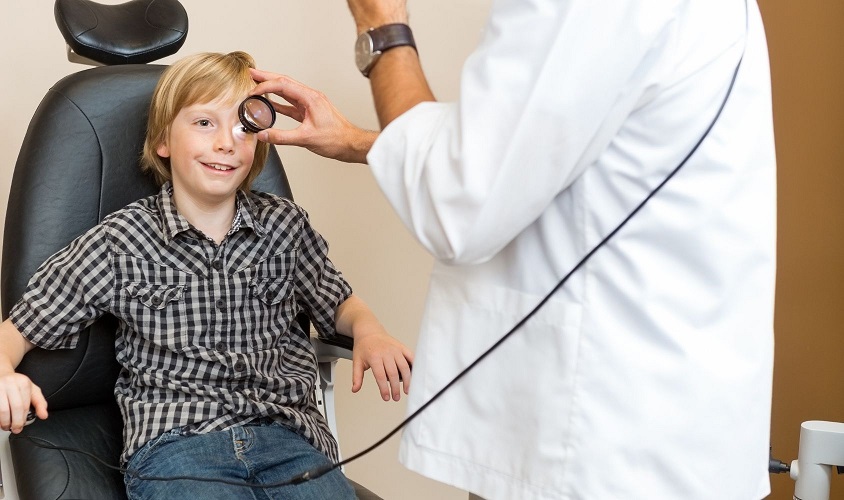
A fundoscopy is an exam that looks in detail at the fundus of the eye. It’s also known as a fundoscopic exam. An ophthalmoscope is generally used to carry out fundoscopies as they provide doctors with excellent visuals and a choice of useful tools and filters.
Investing in a high quality Welch Allyn ophthalmoscope is an excellent way for ophthalmologists and other medical professionals to provide their patients with high quality care. Find out more, and learn about the Welch Allyn ophthalmoscopes we offer, by exploring the Medshop store today.
Additionally, stay tuned to the Medshop blog for more information on healthcare equipment and supplies, as well as advice and guidance on everything from cleaning up a broken mercury thermometer to choosing the best stethoscope for your practice.
